Maurice Hilleman was a scientist. He studied microbiology, single cell organisms that cause infectious diseases, like COVID. He also created vaccines to protect children. Use this story to talk about disease and ways that we protect ourselves from disease, including hand washing, wearing masks, social distancing and getting vaccinated.
Summary: Frogs are amphibians. That means they live part of their life cycle in water and part on land. They're also super cute.
Use the story with simple words and beautiful pictures just to bring to mind what you already know about the frog lifecycle.
As you interact with the story together, pay attention to how it makes you feel. What do you notice and might want to talk about? What other, related things come to mind? High school bio, for example? Or just life in general. How does it all work? How did it come to be? It might make you think about science. Or you can just wonder at it all.
Page 1: Frog in grass 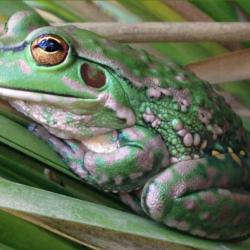

Caption: Frog in the grass
Narration: Adult frogs live most of their lives on land.
Page 2: Frog in water 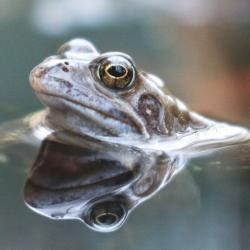

Caption: Frog swimming in water
Narration: But they also need water to reproduce and keep their skin moist. <break time="2s"/> That's why they are called amphibians
Page 3: Amplexus 

Caption: Amplexus
Narration: Male frogs grasp the female from behind to fertilize her eggs. <break time="2s"/> This is called amplexus.
Page 4: Fertile eggs develop into embryos and then tadpoles 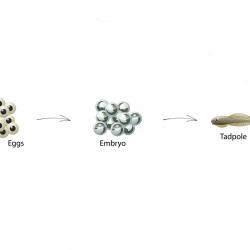

Caption: Fertile eggs develop into embryos and then tadpoles
Narration: Frogs lay their eggs in the water where they are fertilized and develop into embryos. <break time="3s"/> When embryos hatch they become free swimming and are called tadpoles.
Page 5: Tadpoles develop into froglets and then adult frogs 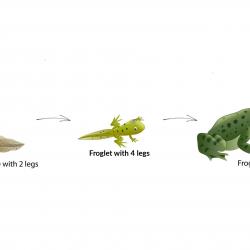

Caption: Tadpoles develop into froglets and then adult frogs
Narration: After several days and still in the water, tadpoles develop legs and lungs and become froglets. <break time="3s"/> Froglets move onto land, loose their tail and become adult frogs where the life cycle continues.
Page 6: Tree frog resting on back holding stomach belly 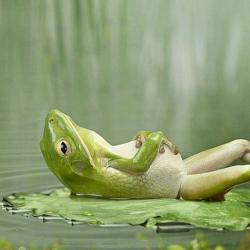

Caption: Tree frog at rest
Narration: All those changes are a lot of work. At last the frog can rest.
Page 7: Talking about Frogs 

Caption: Young boy with a tiny frog
Narration: What would you like to talk about.
